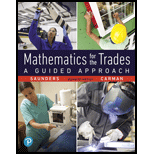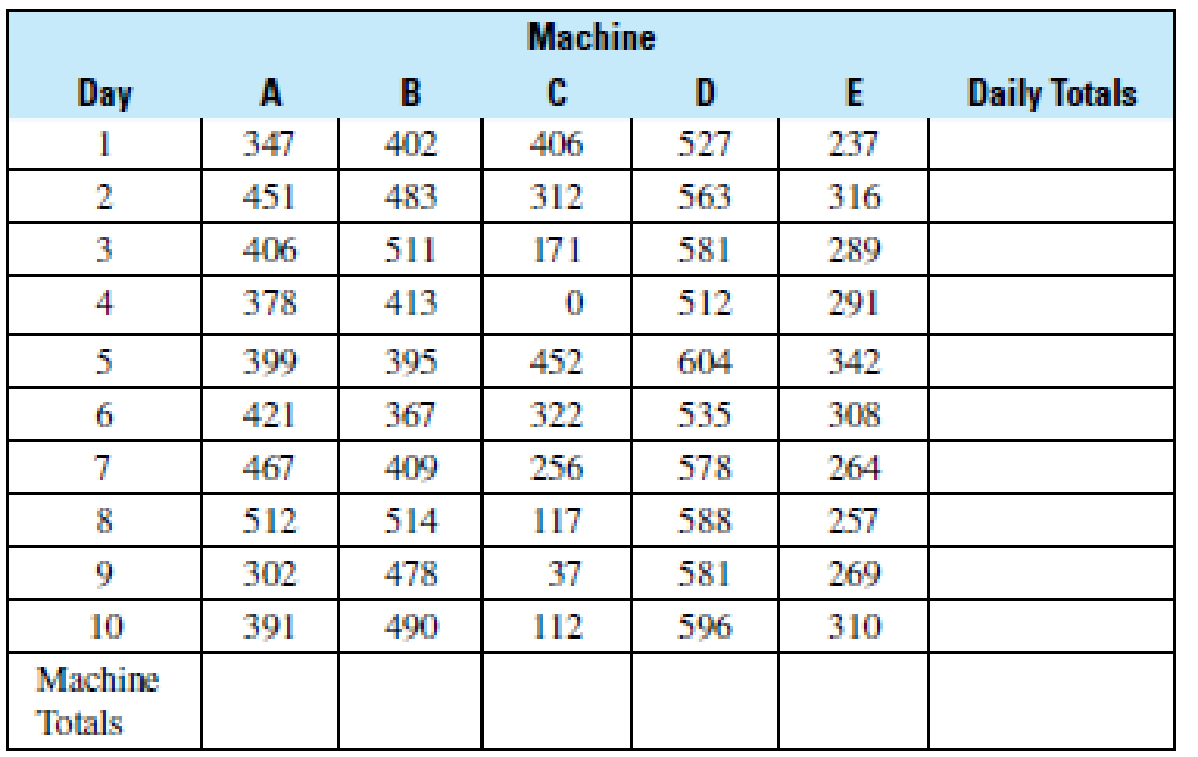
Concept explainers
E. Calculator Problems
You probably own a calculator and, of course, you are eager to put it to work doing practical math calculations. In this text we include problem sets for calculator users. These problems are taken from real-life situations and, unlike most textbook problems, involve big numbers and lots of calculations. If you think that having an electronic brain-in-a-box means that you do not need to know basic arithmetic, you will be disappointed. The calculator helps you to work faster, but it will not tell you what to do or how to do it.
Detailed instructions on using a calculator with whole numbers appears on page 68.
Here are a few helpful hints for calculator users:
- 1. Always estimate your answer before doing a calculation.
- 2. Check your answer by comparing it with the estimate or by the other methods shown in this text. Be certain that your answer makes sense.
- 3. If you doubt the calculator (they do break down, you know), put a problem in it whose answer you know, preferably a problem like the one you are solving.
Manufacturing The following table lists the number of widget fasteners made by each of the five machines at the Ace Widget Co. during the last ten working days.

- (a) Complete the table by finding the number of fasteners produced each day. Enter these totals under the column “Daily Totals” on the right.
- (b) Find the number of fasteners produced by each machine during the ten-day period and enter these totals along the bottom row marked “Machine Totals.”
- (c) Does the sum of the daily totals equal the sum of the machine totals?
Want to see the full answer?
Check out a sample textbook solution
Chapter 1 Solutions
EP MATHEMATICS FOR THE TRADES
- Provethat a) prove that for any irrational numbers there exists? asequence of rational numbers Xn converg to S. b) let S: RR be a sunctions-t. f(x)=(x-1) arc tan (x), xe Q 3(x-1) 1+x² x&Q Show that lim f(x)= 0 14x C) For any set A define the set -A=yarrow_forwardLet X be a continuous RV with CDF Find P(X < 0), P(-1 < X < 1) and P(0.5 < X). Based on your answers to the above questions, what is the median of the distribu-tion? Why Find the PDF, fx (x), of X.arrow_forwardNo chatgpt pls will upvote Already got wrong chatgpt answer Plzarrow_forwardQ2: Find the interval and radius of convergence for the following series: Σ n=1 (-1)η-1 xn narrow_forwardA survey of 581 citizens found that 313 of them favor a new bill introduced by the city. We want to find a 95% confidence interval for the true proportion of the population who favor the bill. What is the lower limit of the interval? Enter the result as a decimal rounded to 3 decimal digits. Your Answer:arrow_forwardLet X be a continuous RV with PDF where a > 0 and 0 > 0 are parameters. verify that f-∞ /x (x)dx = 1. Find the CDF, Fx (7), of X.arrow_forward6. [20] Let X be a continuous RV with PDF 2(1), 1≤x≤2 fx(x) = 0, otherwisearrow_forwardA survey of 581 citizens found that 313 of them favor a new bill introduced by the city. We want to find a 95% confidence interval for the true proportion of the population who favor the bill. What is the lower limit of the interval? Enter the result as a decimal rounded to 3 decimal digits. Your Answer:arrow_forwardA survey of 581 citizens found that 313 of them favor a new bill introduced by the city. We want to find a 95% confidence interval for the true proportion of the population who favor the bill. What is the lower limit of the interval? Enter the result as a decimal rounded to 3 decimal digits. Your Answer:arrow_forward2. The SMSA data consisting of 141 observations on 10 variables is fitted by the model below: 1 y = Bo+B1x4 + ẞ2x6 + ẞ3x8 + √1X4X8 + V2X6X8 + €. See Question 2, Tutorial 3 for the meaning of the variables in the above model. The following results are obtained: Estimate Std. Error t value Pr(>|t|) (Intercept) 1.302e+03 4.320e+02 3.015 0.00307 x4 x6 x8 x4:x8 x6:x8 -1.442e+02 2.056e+01 -7.013 1.02e-10 6.340e-01 6.099e+00 0.104 0.91737 -9.455e-02 5.802e-02 -1.630 0.10550 2.882e-02 2.589e-03 11.132 1.673e-03 7.215e-04 2.319 F) x4 1 3486722 3486722 17.9286 4.214e-05 x6 1 14595537 x8 x4:x8 x6:x8 1 132.4836 < 2.2e-16 1045693 194478 5.3769 0.02191 1 1198603043 1198603043 6163.1900 < 2.2e-16 1 25765100 25765100 1045693 Residuals 135 26254490 Estimated variance matrix (Intercept) x4 x6 x8 x4:x8 x6:x8 (Intercept) x4 x6 x8 x4:x8 x6:x8 0.18875694 1.866030e+05 -5.931735e+03 -2.322825e+03 -16.25142055 0.57188953 -5.931735e+03 4.228816e+02 3.160915e+01 0.61621781 -0.03608028 -0.00445013 -2.322825e+03…arrow_forwardIn some applications the distribution of a discrete RV, X resembles the Poisson distribution except that 0 is not a possible value of X. Consider such a RV with PMF where 1 > 0 is a parameter, and c is a constant. (a) Find the expression of c in terms of 1. (b) Find E(X). (Hint: You can use the fact that, if Y ~ Poisson(1), the E(Y) = 1.)arrow_forwardNo chatgpt pls will upvote Already got wrong chatgpt answerarrow_forwardarrow_back_iosSEE MORE QUESTIONSarrow_forward_ios
 Intermediate AlgebraAlgebraISBN:9781285195728Author:Jerome E. Kaufmann, Karen L. SchwittersPublisher:Cengage Learning
Intermediate AlgebraAlgebraISBN:9781285195728Author:Jerome E. Kaufmann, Karen L. SchwittersPublisher:Cengage Learning Algebra for College StudentsAlgebraISBN:9781285195780Author:Jerome E. Kaufmann, Karen L. SchwittersPublisher:Cengage Learning
Algebra for College StudentsAlgebraISBN:9781285195780Author:Jerome E. Kaufmann, Karen L. SchwittersPublisher:Cengage Learning

